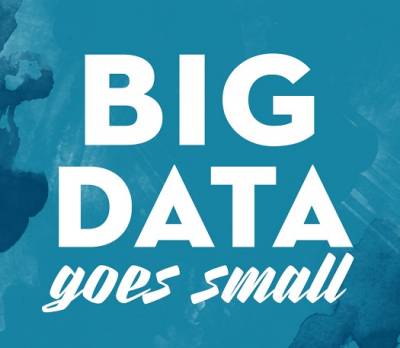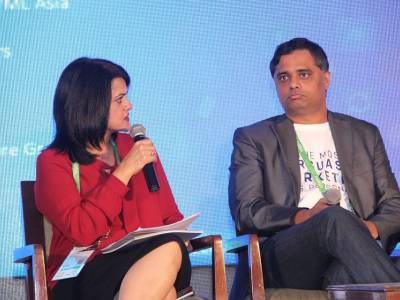DDB Diaries: Big Data Goes Small
How the Quantified Self Movement is personalizing data, in sometimes surprising ways
Did you hear the one about Target’s analytics system correctly identifying that a teenage girl was pregnant before her own father knew?
It’s the kind of fact that assumes fictional proportions, a conversational opener that’s equal part urban legend and cautionary tale, a reminder of the access corporations enjoy to terrabytes of personal data. Big Data. The term itself evokes things anonymous and vaguely sinister.
But what if we were to tell you that data logging, number-crunching and correlating - all the hallmarks of Big Data - are increasingly being employed by individuals to enhance the quality of their lives in specific and significant ways?
We would be telling you about the Quantified Self Movement (QSM). Pioneered in 2007 by Wired Magazine editors Gary Wolf and Kevin Kelly, the QSM was pitched as a way for people to channel data and technology towards making tangible lifestyle improvements. The movement was initially limited to a small group of life-loggers who demonstrated an above-average appetite for collecting data about physical movements, calorie intake and sleep cycles, and an enthusiasm for processing these numbers to spot what worked, when, and what cues they could use to shift or ingrain key routines and habits. Not surprisingly, the early tribe of life-loggers tended to focus on health and fitness, areas in which quantification seemed to have the most obvious application and benefit.
QSM - or what purists would describe as an approximation of it - went mainstream with the launch of Nike+ FuelBand, which motivated users to get fit by combining the ability to track movement data with the consumer’s impulse to share such data with friends and peers. Nike+ FuelBand has since quietly receded from stores, but QSM’s growth continues unabated, accelerated by widely available and legible sensors and apps, most of which can be inexpensively accommodated on a single smartphone.
Currently, the QSM has acquired something of a faddish quality. Today, people are tracking their behaviours and bodies to get fit (FitBit, Jawbone), to monitor moodswings (Lume, Happiness), to become better drivers (ZenDrive), to quit smoking (QuitBit), to create video timelines of their lives (One Second Everyday), to rate their lives (Expereal) and to track dreams (Shadow). Given this explosion, experts question whether QSM-themed apps can effect genuine change. Can they go beyond offering specific solutions to specific problems, such as monitoring insulin levels or reminding seniors to take their suite of medications?
But solution-delivery can seem besides the point when you consider that what’s most interesting about QSM is how people are co-opting and distilling seemingly scientific and objective data to construct what are, essentially, highly personalized narratives: Of what they’re eating, who they’re meeting, where’re they’re going, how much they’re moving, what they’re thinking, how they’re feeling.
Contrary to all expectations, consumers are creating autobiographies composed of digits and sharing what they document with communities of like-minded others. It’s data, distilled and drilled down, but also going personal and social. So much so that QSM commentators are now beginning to look at sites like Facebook and Twitter as potential examples of life-logging!
And what underpins this personalized story-telling? An instinct for autobiography? Growing self-awareness? A desire to quantify ‘achievement’? Whatever your pick, it might just be these deeply human desires that determine the future fate of the quantified self movement. And it might just be these deeply human desires that continue to transform Big Data, or carefully chosen slices of it, into implications that are Reassuringly Small.
Toru Jhaveri is a Director, Brand Communications in our Mumbai office. She is an art and psychology enthusiast with a questionable fondness for thinking out loud.
















Share
Facebook
YouTube
Tweet
Twitter
LinkedIn